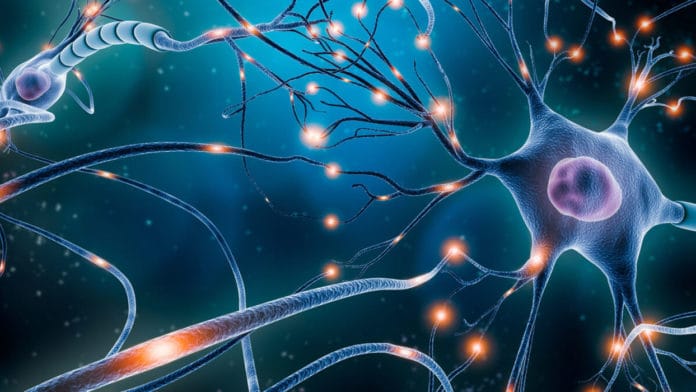The brain’s ability to create long-term memories is a distinct process that depends on the hippocampus. Scientists know where memories are made. But how they are made remained unknown.
Neuroscientists at the Harvard Medical School (HMS) have taken a step towards understanding the biology of long-term Memory. They even aimed to find ways to intervene when memory deficits occur with age or disease.
In a new study, they reported about the newly identified mechanism used by neurons in the adult mouse hippocampus to regulate signals they receive from other neurons, in a process that appears critical for memory consolidation and recall.
Michael Greenberg, Blavatnik Institute at HMS, said, “Memory is essential to all aspects of human existence. The question of how we encode memories that last a lifetime is a fundamental one, and our study gets to the very heart of this phenomenon.”
Scientists observed that new experiences initiate sparse populaces of neurons in the hippocampus that express two genes: Fos and Scg2. These genes permit neurons to fine-tune inputs from alleged inhibitory interneurons, cells that hose neuronal excitation. Small groups of disparate neurons may form persistent networks with coordinated activity in response to an experience along these lines.
Lynn Yap, the HMS graduate student in neurobiology, said, “This mechanism likely allows neurons to better talk to each other so that the next time a memory needs to be recalled, the neurons fire more synchronously. We think coincident activation of this Fos-mediated circuit is potentially a necessary feature for memory consolidation, for example, during sleep, and also memory recall in the brain.”
To form memories, the brain must somehow wire an experience into neurons so that when these neurons are reactivated, the initial experience can be recalled. In this study, scientists set out to discover this process by taking a gander at gene Fos.
The Fos gene is expressed once a neuron is activated. Considering this property of gene Fos, scientists used it as a marker of recent neuronal activity to identify brain cells that regulate thirst, torpor, and many other behaviors.
Scientists exposed mice to new environments and looked at pyramidal neurons, the principal cells of the hippocampus. They found that relatively sparse populations of neurons expressed Fos after exposure to a unique experience. Next, they prevented these neurons from expressing Fos, using a virus-based tool delivered to a specific hippocampus area, which left other cells unaffected.
Mice that had Fos blocked in this manner showed significant memory deficits when assessed in a maze that required them to recall spatial details, indicating that the gene plays a critical role in memory formation.
Scientists studied the differences between neurons that expressed Fos and those that did not. Using optogenetics to turn inputs from different nearby neurons on or off, they discovered that Fos-expressing neurons’ activity was most strongly affected by two types of interneurons.
Neurons expressing Fos were found to receive increased activity-dampening, or inhibitory, signals from one distinct type of interneuron and decreased inhibitory signals from another type. These signaling patterns disappeared in neurons with blocked Fos expression.
Yap said, “What’s critical about these interneurons is that they can regulate when and how much individual Fos-activated neurons fire, and also when they fire relative to other neurons in the circuit. We think that at long last, we have a handle on how Fos may, in fact, support memory processes, specifically by orchestrating this type of circuit plasticity in the hippocampus.”
To explore the function of Fos, scientists used single-cell sequencing and additional genomic screens to identify genes activated by Fos. They found that the gene Scg2 plays a vital role in regulating inhibitory signals.
In mice with experimentally silenced Scg2, Fos-activated neurons in the hippocampus showed a defect in signaling from both kinds of interneurons. These mice also had surrendered in theta and gamma rhythms; brain properties were thought to be critical features of learning and Memory.
Past investigations showed that Scg2 codes for a neuropeptide protein could be cleaved into four distinct forms, then secreted. In the current study, scientists found that neurons appear to use these neuropeptides to calibrate inputs they get from interneurons.
The experiments suggest that after a new experience, a small group of neurons simultaneously express Fos. It also activates Scg2 and its derived neuropeptides to set up a coordinated network with its activity regulated by interneurons.
Greenberg said, “When neurons are activated in the hippocampus after a new experience, they aren’t necessarily linked together in any particular way in advance. But interneurons have extensive axonal arbors, meaning they can connect with and signal to many cells at once. This may be how a sparse group of neurons can be linked together to encode a memory ultimately.”
The study findings represent a possible molecular- and circuit-level mechanism for long-term Memory. They shed new light on the fundamental biology of memory formation and have broad implications for memory dysfunction diseases.
Scientists noted, “however, that while the results are an important step in our understanding of the inner workings of memory, numerous unanswered questions about the newly identified mechanisms remain.”
Greenberg said, “We’re not quite at the answer yet, but we can now see many of the next steps that need to be taken. If we can better understand this process, we will have new handles on Memory and how to intervene when things go wrong, whether in age-related memory loss or neurodegenerative disorders such as Alzheimer’s disease.”
“The findings also represent the culmination of decades of research, even as they open new avenues of study that will likely take decades more to explore.”
Journal Reference:
- Yap, EL., Pettit, N.L., Davis, C.P. et al. Bidirectional perisomatic inhibitory plasticity of a Fos neuronal network. Nature, (2020). DOI: 10.1038/s41586-020-3031-0
